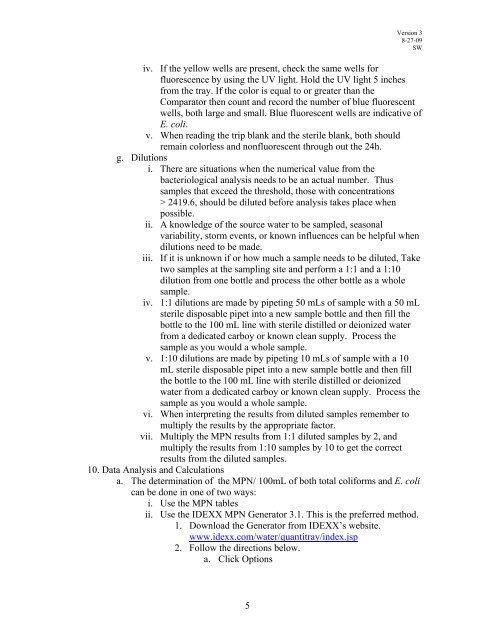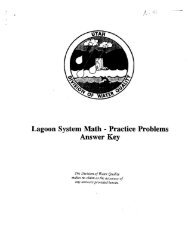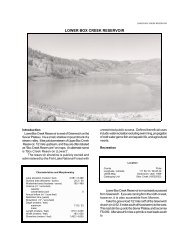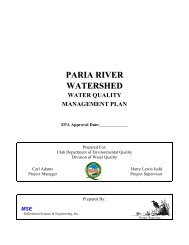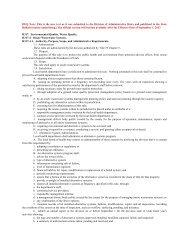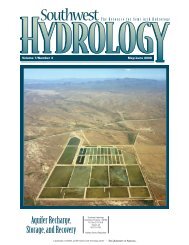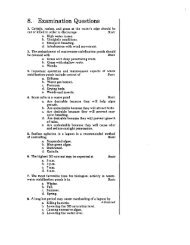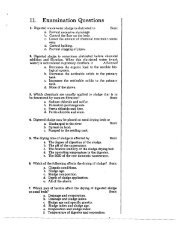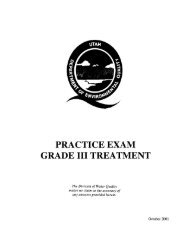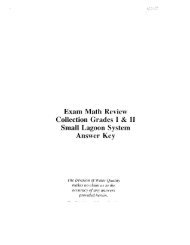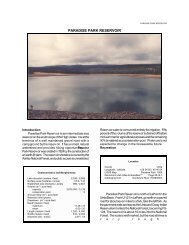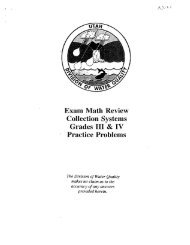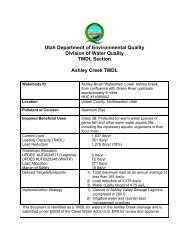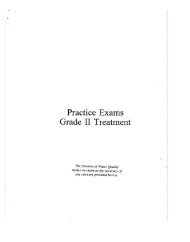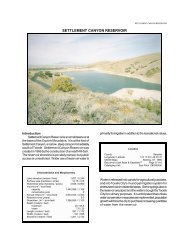Standard Operating Procedure for Escherichia coli - Division of ...
Standard Operating Procedure for Escherichia coli - Division of ...
Standard Operating Procedure for Escherichia coli - Division of ...
- No tags were found...
You also want an ePaper? Increase the reach of your titles
YUMPU automatically turns print PDFs into web optimized ePapers that Google loves.
Version 38-27-09SWiv. If the yellow wells are present, check the same wells <strong>for</strong>fluorescence by using the UV light. Hold the UV light 5 inchesfrom the tray. If the color is equal to or greater than theComparator then count and record the number <strong>of</strong> blue fluorescentwells, both large and small. Blue fluorescent wells are indicative <strong>of</strong>E. <strong>coli</strong>.v. When reading the trip blank and the sterile blank, both shouldremain colorless and nonfluorescent through out the 24h.g. Dilutionsi. There are situations when the numerical value from thebacteriological analysis needs to be an actual number. Thussamples that exceed the threshold, those with concentrations> 2419.6, should be diluted be<strong>for</strong>e analysis takes place whenpossible.ii. A knowledge <strong>of</strong> the source water to be sampled, seasonalvariability, storm events, or known influences can be helpful whendilutions need to be made.iii. If it is unknown if or how much a sample needs to be diluted, Taketwo samples at the sampling site and per<strong>for</strong>m a 1:1 and a 1:10dilution from one bottle and process the other bottle as a wholesample.iv. 1:1 dilutions are made by pipeting 50 mLs <strong>of</strong> sample with a 50 mLsterile disposable pipet into a new sample bottle and then fill thebottle to the 100 mL line with sterile distilled or deionized waterfrom a dedicated carboy or known clean supply. Process thesample as you would a whole sample.v. 1:10 dilutions are made by pipeting 10 mLs <strong>of</strong> sample with a 10mL sterile disposable pipet into a new sample bottle and then fillthe bottle to the 100 mL line with sterile distilled or deionizedwater from a dedicated carboy or known clean supply. Process thesample as you would a whole sample.vi. When interpreting the results from diluted samples remember tomultiply the results by the appropriate factor.vii. Multiply the MPN results from 1:1 diluted samples by 2, andmultiply the results from 1:10 samples by 10 to get the correctresults from the diluted samples.10. Data Analysis and Calculationsa. The determination <strong>of</strong> the MPN/ 100mL <strong>of</strong> both total <strong>coli</strong><strong>for</strong>ms and E. <strong>coli</strong>can be done in one <strong>of</strong> two ways:i. Use the MPN tablesii. Use the IDEXX MPN Generator 3.1. This is the preferred method.1. Download the Generator from IDEXX’s website.www.idexx.com/water/quantitray/index.jsp2. Follow the directions below.a. Click Options5


